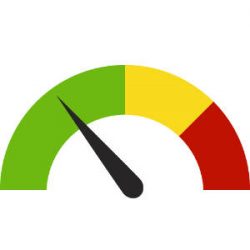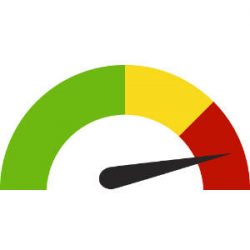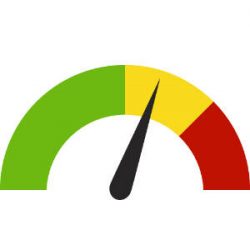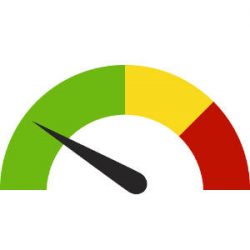One of the attractive things about P2P investing is the wide range of investments available. This variety is fantastic, but it can make it difficult for investors to assess what risks exist and what they are really ‘betting on’. P2P investing has 3 key risks. Below we list some of the most popular types of P2P loan types, and show that the importance of each risk factor can vary considerably amongst the different types of loans.
Every P2P investment has 3 key risks
1. Borrower default
Yes, we know this risk is obvious. If you buy a loan, you want the borrower to pay you back, with interest. Defaults are never a good thing. It can create a risk of loss, and a longer time to get a recovery of funds. Whether a default will create a loss depends on many factors. For example, many P2P loans have buyback guarantees. In this case, the lender will repurchase the loans and the investor will have no loss. If a loan is secured, the collateral may reduce or eliminate any losses for the investor.
2. Loan collateral can sell for less than the amount expected
Nearly all secured P2P loans have loan to values (‘LTVs’) below 70%. Valuations are usually obtained from independent experts. In theory, if a borrower defaults, the value of the collateral should be sufficient to cover the loan balance. In practice, investors can experience losses on secured loans, even with LTVs that appear conservative. Some collateral assets can be difficult to value, valuations can have errors, and market values can decline (particularly if buyers know an asset has been repossessed). Secured loans usually have no buyback guarantees, so checking the valuation reports and quality of the collateral is extremely important. This post provides some tips on how to analyse real estate like a pro, and choose loans with the best collaterals.
3. The lender / platform can fail
An under-appreciated risk of P2P investing is that a lender or platform may fail. There have been two recent examples of this. Eurocent was a Mintos lender that failed in 2017. Collateral UK was a British P2P platform that was closed by regulators in 2018. Failures of lenders and platforms can affect investors in two key ways. Firstly, lenders will be unable to fulfil their buyback guarantees, and loans that default will generate unexpected losses for investors. In the case of Eurocent, a high proportion of their loans defaulted, and we expect loss rates on their loans to be high. In the case of Collateral UK, which was a lender and platform, the closure has created a large amount of uncertainty for investors. It is currently unclear how much investors will recover, and when they will receive their money back.
We attempt to highlight and address these risks for our readers in a few different ways. Firstly, we provide Mintos lender ratings, to highlight the relative quality of lenders on Europe’s largest P2P site. Secondly, we have excluded several sites from our comparison tables where we have significant concerns about their future viability or poor disclosures. Finally, we obtain as much information as possible about the profitability, capital position, and shareholders behind each platform when we publish interviews with the senior management o P2P platforms.
P2P investment risk overview - what to focus on and when
Personal loans with buyback guarantees



P2P loan type
Default risk
Collateral risk
Lender / platform risk
For personal loans that have buyback guarantees, investors are effectively providing a loan to the lender itself, which is secured against a loan that the lender has originated. The buyback guarantee means that no losses can be made by the P2P investor, unless the lender fails. That means it is most important to assess the financial position of the lender itself, rather than which loans are likely to default. There is no collateral risk as no collateral is provided by borrowers.
Real estate secured loans



P2P loan type
Default risk
Collateral risk
Lender / platform risk
Investors should assess both the borrower and collateral before investing in real estate secured loans. Assessing default risk can be difficult as only limited information about the borrower is often provided. This makes it extra important to select loans that have attractive collaterals and lower LTVs, as it reduces the risk of loss if a loan defaults.
Business loans



P2P loan type
Default risk
Collateral risk
Lender / platform risk
Loans to businesses typically have no buyback guarantees. They can be unsecured or secured against a wide range of company assets. In the event of default, losses tend to be high. This means it is important to analyse a company’s likelihood of defaulting, by understanding its financial position and future prospects.
Specialist loans



P2P loan type
Default risk
Collateral risk
Lender / platform risk
Specialist P2P loans include pawnbroking loans, asset-backed loans, car loans, and invoice finance. The loans are usually structured in a way that minimises likely losses if the borrower defaults. We think it is important to consider all three risks when analysing these loans. Default risk exists but but has less impact than some other P2P loans such as unsecured business loans. Collateral risks exist, however specialist loans tend to have LTVs that are quite conservative. Pawnbroking loans have the highest collateral risks as valuation can be difficult. Lender/platform risk is slightly elevated. This is because specialist lenders tend to have complex operations that could be costly and slow to wind down if a lender/platform fails.